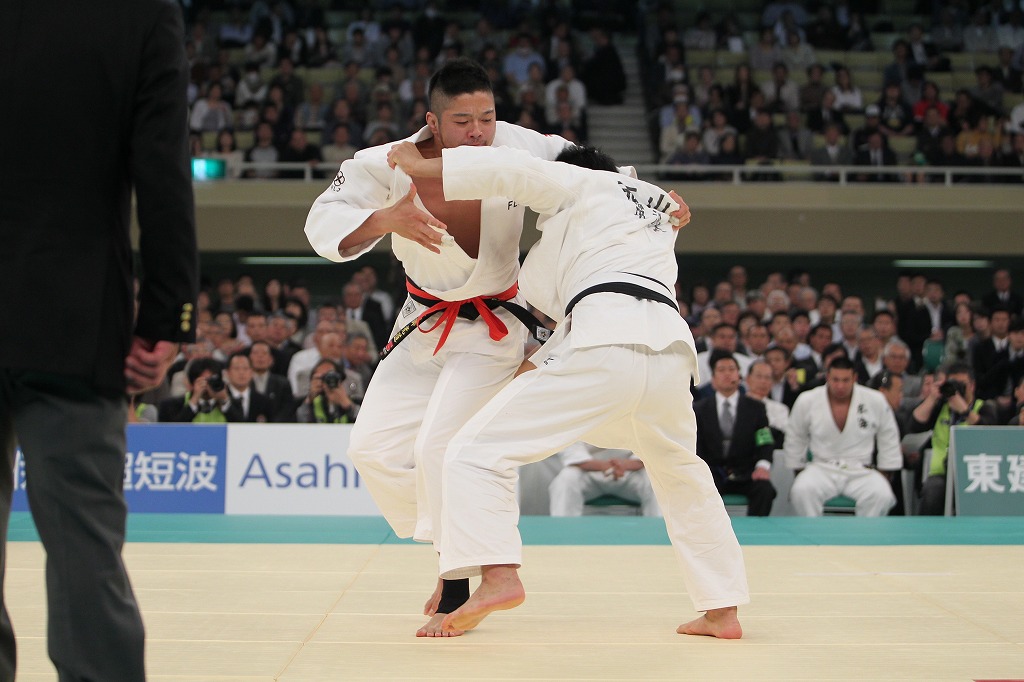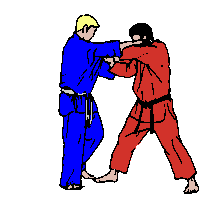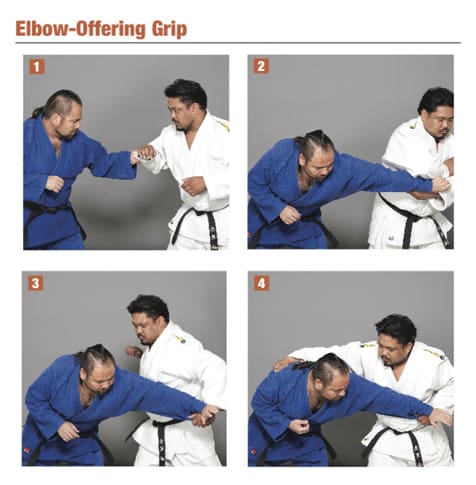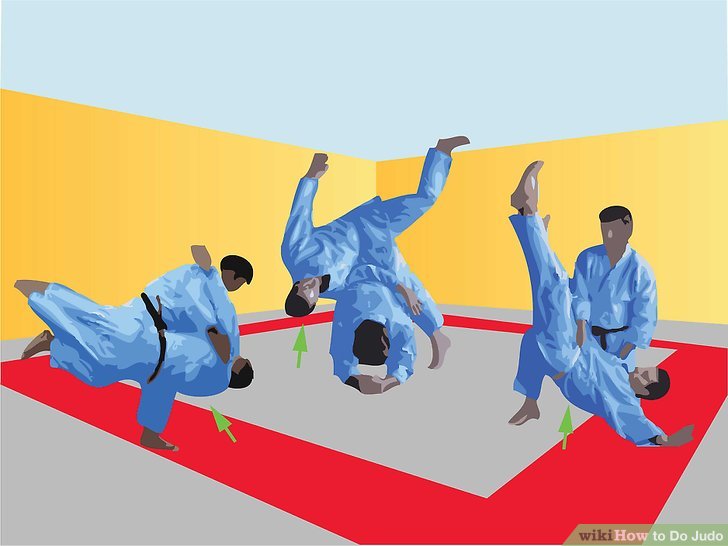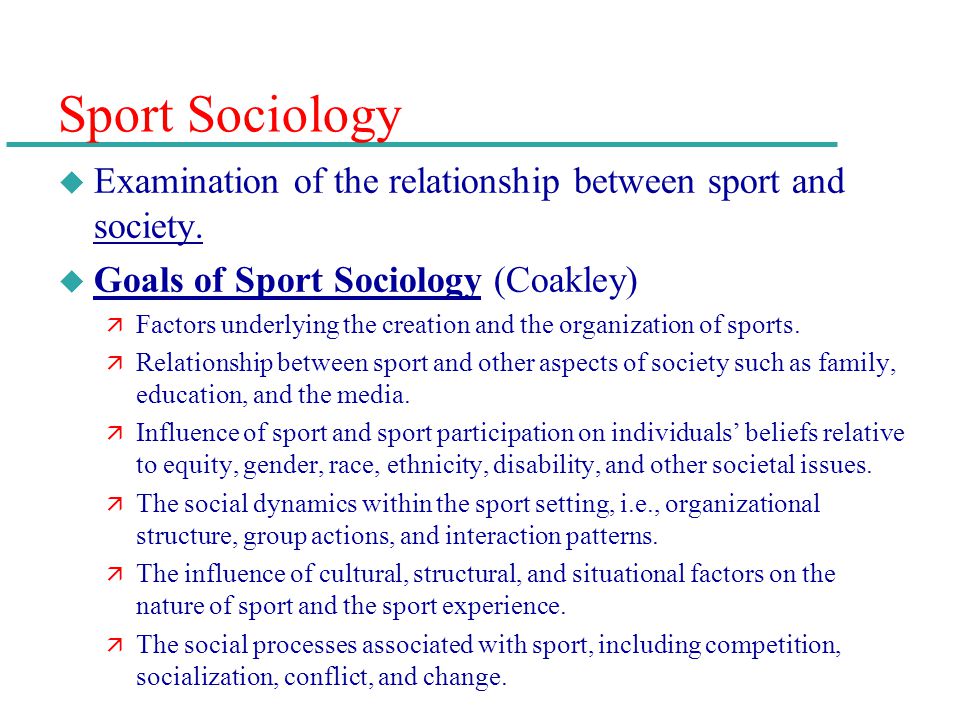TOPIC: SWIMMING
Contents:
Meaning of swimming
Strokes in swimming
History of various life saving strokes
MEANING OF SWIMMING
Swimming, act of moving through the water by using the arms, legs, and body in motions called strokes. The most common strokes are the crawl, backstroke, breaststroke, butterfly, and sidestroke. Swimming is an integral part of almost all water-based activities. It is also a competitive sport itself.
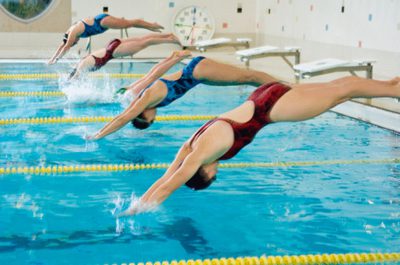
STROKES IN SWIMMING
1. Crawl
2. Backstroke
3. Breaststroke
4. Butterfly
5. Sidestroke
BREAST STROKES SKILLS
This is a swimming stroke in which both arms are extended and pulled back together in a circular motion while both legs are thrust out and pulled back together.
The breaststroke is one of the easiest and most relaxing strokes for novices. Competitive swimmers, however, find it difficult because it uses more energy than the crawl and backstroke when swum at a fast pace. The breaststroke has undergone major changes since it was introduced in the 17th century. Most swimmers now use a technique called the wave breaststroke, which Hungarian coach Jozsef Nagy developed in the late 1980s.
This interactive illustration captures four moments in the breaststroke. The breaststroke is the slowest competitive stroke, and during races the technique of the swimmers is strictly regulated to ensure a fair contest. In this diagram, the swimmer is moving to the right.
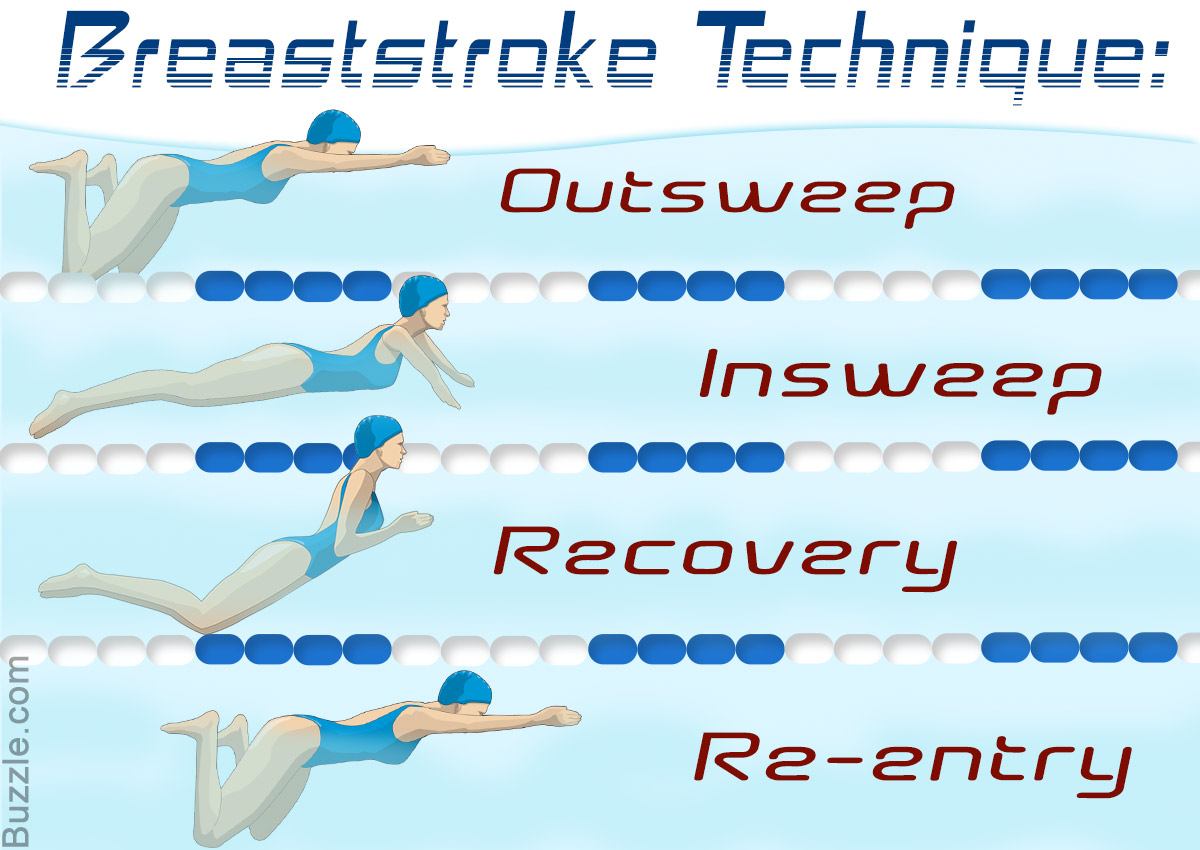
BUTTERFLY STROKE SKILLS
Swimming same as butterfly
In butterfly stroke the arms move together through the water and the feet pump together in what is Known as the dolphin kick.
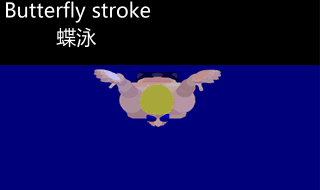
Swimming, act of moving through the water by using the arms, legs, and body in motions called strokes. The most common strokes are the crawl, backstroke, breaststroke, butterfly, and sidestroke. Swimming is an integral part of almost all water-based activities. It is also a competitive sport itself.
Some scientists believe that human beings are born with an instinctive ability to use their arms and legs to stay afloat. That instinct, however, disappears within a few months after birth. Later in life many children and adults learn to swim in order to be safe around the water, to have fun, and to participate in competition.
II SWIMMING FUNDAMENTALS
People can swim in any body of water large enough to permit free movement. These areas include ponds, lakes, rivers, the ocean, and pools. Most people enjoy swimming in water that is between 18° and 29°C (64° and 84°F).
A Learning to Swim
In many parts of the world, people learn to swim by imitating others, most often their parents, brothers, sisters, and friends. Most youngsters in North America also take lessons at swim clubs, community centers, schools, or recreational facilities. In addition, the American Swimming Coaches Association (ASCA) and the American Red Cross sponsor programs that teach children about water safety.
Instructors teach students skills that will make them safe, efficient, and confident swimmers. Beginners first put their heads in the water and blow bubbles by exhaling. Gradually, students progress to floating, treading water, and ultimately, learning the techniques of the major strokes.
Students use various pieces of equipment during these lessons. Water-wings are inflatable worn around the upper arms; they allow children to float easily. Kickboards are buoyant boards that students can rest their arms on; this keeps their upper bodies afloat and allows them to concentrate on kicking correctly. Pull-buoys are foam floats that swimmers hold between their thighs to keep the lower body high and flat on the surface of water; using them, students can learn the arm and upper sbody movements of various strokes. Paddles are small, firm boards fitted over the hands; they force students to pull their arms through the water correctly. Fins worn on the feet allow swimmers to go faster and to develop proper body position and power.
[youtube]
https://www.youtube.com/watch?v=xNPZ4JunHJo[/youtube]
B Hazards and Safety Measures
Individuals should not swim in conditions that their ability and experience will not allow them to handle. For inexperienced recreational swimmers, many safety hazards exist—even in a pool. These hazards include misjudging a dive and hitting one’s head on the bottom, holding one’s Breath too long, becoming exhausted, and experiencing sudden cramps while too far from shore or other swimmers.
In rivers and oceans, all swimmers should respect the power of nature. Powerful waves, tides, and currents can easily overpower even the most experienced swimmers, sweeping them out beyond safety or throwing them into coral or rocks. Caves pose additional dangers because swimmers can be trapped inside them. Swimmers must follow the instructions of lifeguards and obey posted information about water conditions, tides, and other dangers such as jellyfish or pollution. A good precaution for children is the buddy system, in which each child is paired with another while in the water. This system ensures that no person is swimming alone and that if an emergency does happen, the lifeguard can be notified immediately.
[youtube]
https://www.youtube.com/watch?v=Cu03N8h8J_k[/youtube]
III THE MAJOR STROKES
Four of the five main swimming strokes—the crawl, backstroke, breaststroke, and butterfly—are used both in competition and recreation. The fifth major stroke, the sidestroke, is slower than the competitive strokes and is used primarily as a recreational and life-saving technique.
A Crawl
The crawl is the fastest and most efficient swimming technique. It is also called the freestyle, because swimmers use it in freestyle events, which allow the use of any stroke.
To swim the crawl, a swimmer travels through the water with the chest and head pointing downward toward the bottom. The legs move in a flutter kick, moving up and down quickly and continually. Each arm stroke begins as the right arm is brought in front and slightly to the right of the swimmer’s head and into the water. When the right hand enters the water, the right elbow should be above the surface of the water and the body should be tilted slightly to the left side. At the same time, the left arm accelerates underneath the water in a pulling motion down the length of the body.
After the right arm enters the water, the body naturally rolls to the right so that the body is horizontal to the water surface. The left arm continues through the stroke at the swimmer’s side. The swimmer continues to extend the right arm forward, and the body begins to roll onto its right side.
As the right arm begins to pull the swimmer forward, it increases the body’s tilt to the right side, and the left arm exits the water near the swimmer’s hip.
[youtube]
https://www.youtube.com/watch?v=fqTdZlqfrio[/youtube]
The swimmer then brings the left arm forward to enter the water while the right arm travels down the swimmer’s side. As the left arm enters the water and the right arm exits, the swimmer’s body begins to turn to the left side again, and the swimmer begins the stroke sequence once more.
In the crawl, turning the head to breathe is a simple, easy motion that should be coordinated with the body roll. As the body tilts completely to the right or left side, the swimmer should roll the head to the same side and take a breath. After inhaling, the swimmer puts his or her face back in the water, looking toward the bottom of the pool. The swimmer exhales slowly through the nose or mouth as the body rolls toward the other side.
B Backstroke
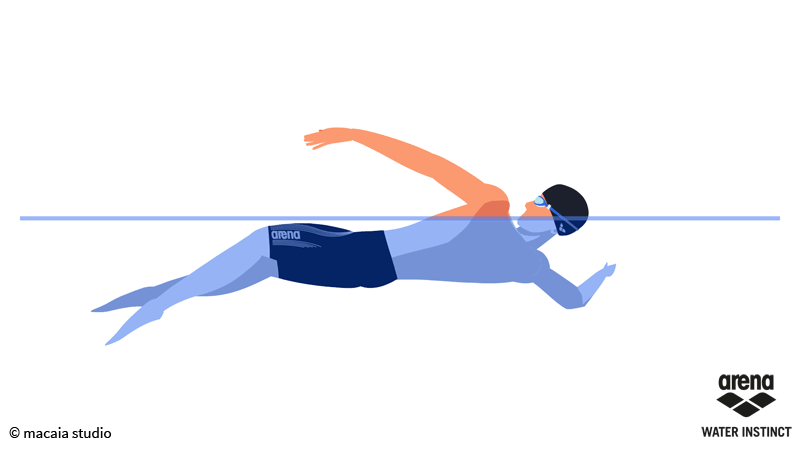
The backstroke is the only stroke that is swum on the back, with the swimmer looking up. Backstroke swimmers therefore cannot see where they are going. Because the face is out of the water, swimmers need no special breathing technique. Back stroke use the same flutter kick that crawl swimmers do.
At the beginning of each arm stroke, the swimmer extends the right arm so it enters the water slightly to the right of the head. The palm should be facing away from the swimmer and the pinky finger should enter the water first. At the same time, the swimmer moves the left arm through the water below the left side of the body. Once in the water, the right arm begins pulling the swimmer forward by bending at the elbow. At the same time the swimmer holds the left arm straight as it reaches the hip and lifts it out of the water. As the right arm continues to pull, the swimmer rotates slightly onto the right side and swings the left arm up above the head.
As the swimmer finishes the right arm’s stroke along the body, he or she begins to rotate toward the left side as the left arm reaches to enter the water above the head.
As the left hand enters the water, the body completes its roll to the left side and the right arm lifts out of the water. Continuing these motions, the swimmer moves forward.
[youtube]
https://www.youtube.com/watch?v=rLBxLUF1jiI[/youtube]
C Breaststroke
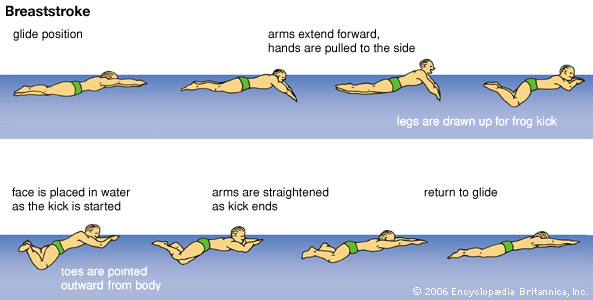
The breaststroke is one of the easiest and most relaxing strokes for novices. Competitive swimmers, however, find it difficult because it uses more energy than the crawl and backstroke when swum at a fast pace. The breaststroke has undergone major changes since it was introduced in the 17th century. Most swimmers now use a technique called the wave breaststroke, which Hungarian coach Jozsef Nagy developed in the late 1980s.
To swim the wave breaststroke, the swimmer enters the water with the body streamlined, facing the pool bottom with arms and legs fully extended. To begin the stroke, the swimmer sweeps the arms out with the hands facing outward and bent slightly upward at the wrist. When the swimmer’s body and arms form a T-shape, the swimmer bends each arm at the elbow. The elbows remain near the surface of the water, while the forearms and hands, pointing toward the bottom of the pool, sweep inward and underneath the chin. The swimmer shrugs the shoulders, looks down, and arches the back as the arm sweep pulls the body forward. The swimmer then raises the feet to the surface of the water, bends the knees, and spreads the legs. The thighs should remain in line with the body.
As the head and upper torso clear the surface of the water, the swimmer inhales and lunges forward with the arms. During this movement the swimmer turns the feet outward and kicks backward. The swimmer then returns to the basic streamlined position and repeats the stroke.
[youtube]
https://www.youtube.com/watch?v=l00tfMwHvMI[/youtube]
D Butterfly
West German swimmer Michael Gross won two gold medals at the 1984 Olympic Games in Los Angeles, California, and another at the 1988 Olympics in Seoul, South Korea. He was nicknamed the Albatross because of his large arm span. He is seen here swimming the 100-meter butterfly during the 1984 Games.
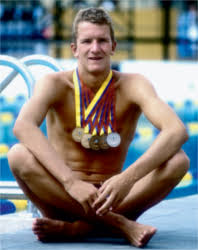
The butterfly stroke is powerful, graceful, and fast. More than any other stroke, the butterfly relies on good technique. Developed between 1930 and 1952, the butterfly is swum with an undulating motion. The arms are brought forward over the water’s surface, then brought back together in front of the body simultaneously. Each arm stroke is complemented by two dolphin kicks, meaning the feet are kept together and brought down then up again, much like the motion of a dolphin’s tail.
The swimmer begins the butterfly with the body in the basic streamlined position and the head facing downward. The arms enter the water with the hands facing outward, as the swimmer lunges forward, submerging the head and chest slightly. At this point the swimmer makes a light downward kick with both feet. The body glides forward, and the hands catch water and begin to pull.
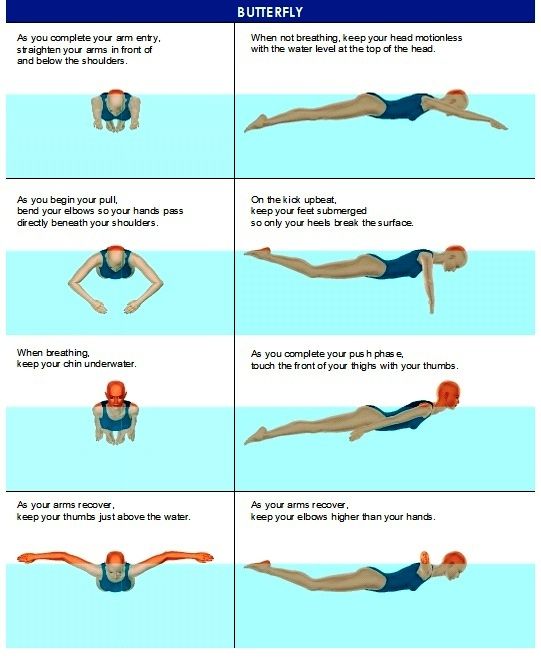
This interactive illustration captures four moments in the butterfly stroke. In the butterfly, the arms move together through the water, and the feet pump together in what is known as the dolphin kick. Swimming the butterfly is tiring, so few swimmers use it except during races. However, the butterfly’s effort does translate into speed, and it is almost as fast as the crawl stroke. In this diagram, the swimmer is moving to the right.
The pulling stroke begins with the hands facing outward and the elbows near the water surface. The swimmer pulls the hands down so that they come together under the body. The legs start the second downward kick.
When the swimmer then pulls the arms down to the hips, the motion forces the head and shoulders above the surface of the water. This positioning enables the swimmer to inhale.
The swimmer finishes the arm pull with a sweeping motion that brings each arm along the sides with the palms facing in. When the second downward kick is completed, the swimmer swings the arms slightly out of the water and glides forward. Another stroke cycle begins as the swimmer plunges the arms back into the water above the head.
[youtube]
https://www.youtube.com/watch?v=flqjEUsDn9k[/youtube]
E Sidestroke
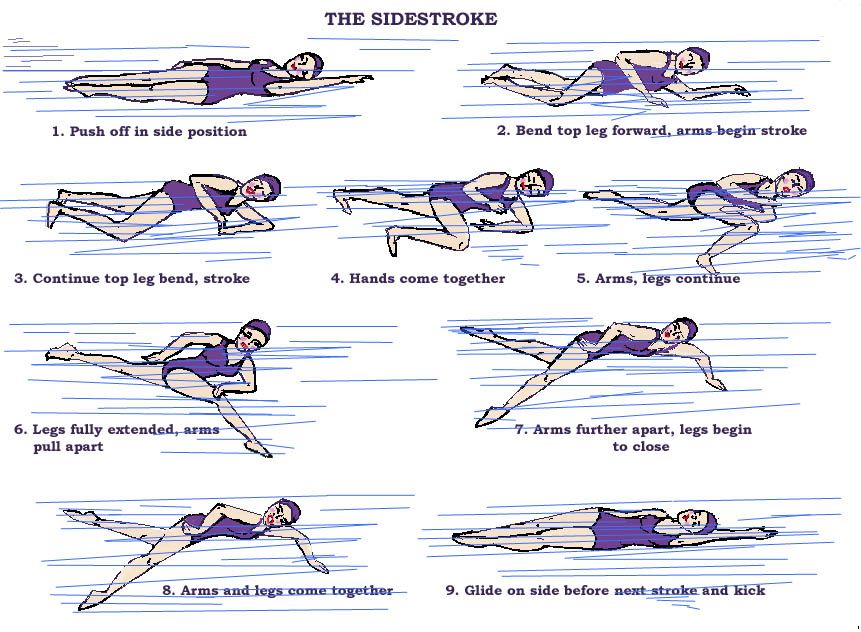
American swimmer Janet Evans raises her arm in triumph after winning the Olympic gold medal in the women’s 400-meter individual medley in 1988. Evans won a total of three gold medals at the 1988 Olympics and she has registered world records for three separate events. Women’s swimming has been an Olympic sport since 1912.
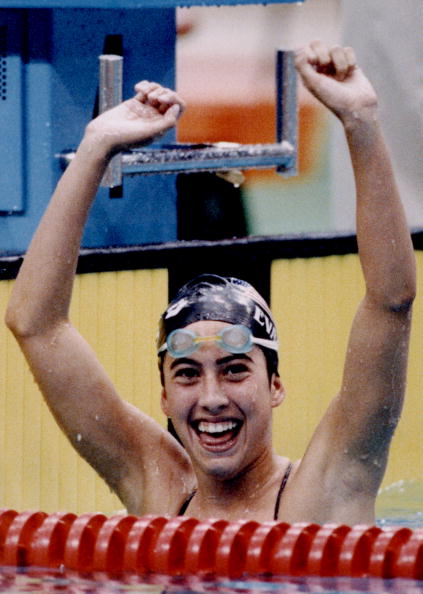
Many regional meets are held every two or four years. These include the Pan-Pacific Championships for nations in Asia and the Pacific Ocean region, the European championships, the Pan American Games for the countries of North and South America, and the African championships.
To participate in international meets, a swimmer must be selected by his or her national federation. Many countries base the selection on performances at national championships or Olympic trials. In addition, swimmers must meet international time standards predetermined by FINA. However, each country is allowed to select one swimmer per event regardless of the swimmer’s times.
V OTHER SWIMMING ACTIVITIES
Snorkeling
Snorkeling is a popular activity that involves swimming face down in the water while breathing through a slender plastic tube called a snorkel. Most people snorkel as a way to view aquatic plants and animals. Snorkelers use a mask to see the underwater objects and wear fins to propel themselves.
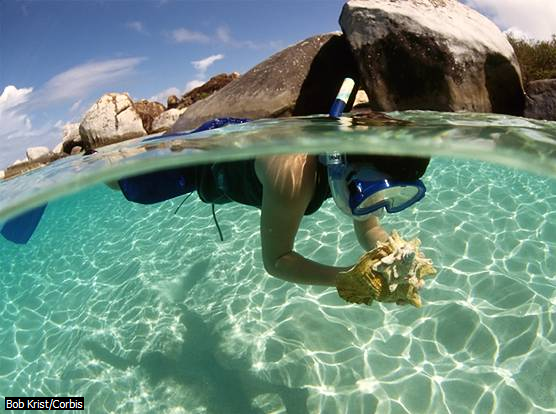
Swimming is integral to several sports, including body boarding, snorkeling, surfing, synchronized swimming, triathlon, underwater diving, and water polo. People also should have strong swimming skills in a variety of other water-based activities, including competitive diving, fishing, jet-skiing, rowing, sailing, and waterskiing.
Swimming is a valuable activity for physical therapy and exercise. Because it works the majority of the muscles in the body and provides both aerobic benefits and resistance benefits (as the swimmer pulls and pushes through the water), the sport is generally considered one of the most complete forms of exercise. Swimming does not strain joints and connective tissue as much as many other forms of exercise, and swimmers injure themselves at a lower rate than most other athletes. Athletes in other sports who are recovering from injuries often swim to stay in shape.
Water Polo
Water polo, a team sport played in swimming pools, became an Olympic sport in 1900. A water polo team, such as the team wearing white caps pictured here, has 35 seconds to score each time it attacks its opponent. Goals are scored by throwing or pushing the ball past the opponent’s floating goalposts.
Several exercise programs are water based. In water aerobics, the water provides extra resistance for cardiovascular workouts. Many older adults exercise by becoming involved in programs with organized coaching, workouts, and competition. Swimming laps in pools is an extremely popular exercise among people of all ages.

Not all competitions take place in pools. In long-distance swimming, racers compete over lengthy courses, usually in lakes, rivers, or the ocean. Most competitions are held at distances of 5 and 25 km (3.1 and 15.5 mi), but some races are longer than 38 km (24 mi). The longest races can take seven or eight hours to complete.
Several occupations require that individuals be proficient swimmers. For lifeguards, swimming skills are perhaps most important because lifeguards are responsible for the safety of other people in swimming areas. Scuba diving and snorkeling instructors also must be prepared to assist others if an emergency occurs. Physical education teachers must swim well enough to teach others. Underwater archaeologists do research while scuba diving, so strong swimming skills help them with their work. Pearl divers must be able to swim deep and hold their breath for a long time as they descend to the bottom to search for their treasures. Sailors and offshore oil workers do not swim as part of their jobs, but because they work on the water, they should be able to swim fairly well in case they accidentally fall overboard.
VI HISTORY
Human beings have been swimming for thousands of years. One of the earliest representations of swimming is an ancient Egyptian wall relief that shows soldiers of Pharaoh Ramses II (reigned 1290-1224 BC) pursuing their enemies by swimming across the Orontes River between ancient Egypt and Asia Minor.
Swimming was highly esteemed in ancient Greece and Rome, especially as a form of training for warriors. In Japan, competitions were held as early as the 1st century BC. In Europe, swimming was less popular during the Middle Ages (5th century to 15th century), when immersion in water was sometimes associated with the recurrent epidemic diseases of the time.
The crawl stroke was probably invented independently in various areas of the world several hundred years ago. Swimmers in South America and the South Pacific used crawl-like strokes long before they were used in Europe. Native Americans also used an over arm crawl stroke. In 1844 two members of the Native American Ojibwa tribe named The Flying Gull and Tobacco traveled to England, where they defeated local champions and became national celebrities.
By the 19th century European misconceptions about the dangers of swimming had been dispelled. In the late 19th century amateur swimming clubs began conducting competitions in the United States and Britain. In the United States, colleges and universities such as Yale University, Indiana University, and the University of Southern California played an important role in spreading interest in swimming as a competitive sport. In 1875 Matthew Webb of Great Britain became the first person to swim across the English Channel (see Channel Swimming). Webb swam between Dover, England, and the coast of France near Calais, where the channel is more than 32 km (20 mi) in width. By 1896 swimming had become well established. It was one of the sports at the first modern Olympic Games, held that year in Athens, Greece.
A Early Champions
At the 1904 Olympics in St. Louis, Missouri, American swimmer Charles Daniels won gold medals in the 200-meter and 400-meter freestyle, signaling the beginning of an era of American dominance that lasted until the 1930s.
Women’s swimming became an Olympic sport at the 1912 Games in Stockholm, Sweden, and Australian swimmer Fanny Durack won the first gold medal in the 100-meter freestyle. That same year American swimmer Duke Kahanamoku won the men’s 100-meter freestyle. Kahanamoku repeated his 100-meter victory at the 1920 Games in Antwerp, Belgium, and was also a member of the winning 4 × 200-meter freestyle relay team. Later, Kahanamoku traveled worldwide as a Red Cross water safety instructor, promoting swimming and the sport of surfing.
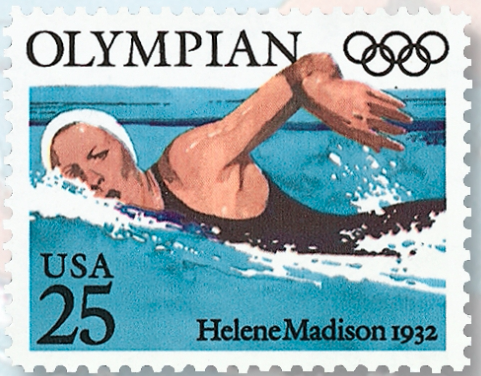

Swimming became more popular in the United States in the 1940s and 1950s, partly due to American swimmer and actor Esther Williams. Because the Olympics were cancelled during World War II (1939-1945), Williams never competed in the Olympics competition, but she starred in a number of popular motion pictures that featured her in water ballets, swimming, diving, and waterskiing. She went on to develop her own line of swimming pools.
In the 1950s and 1960s Australian swimmers enjoyed great Olympic success, including Murray Rose, Jon Konrads, David Thiele, and Dawn Fraser. Fraser became the first Olympic champion to win the same event at three different Olympics when she captured the gold medal in the 100-meter freestyle at the 1956 Games in Melbourne, Australia, the 1960 Games in Rome, Italy, and the 1964 Games in Tokyo, Japan.
B Champions Since the 1970s
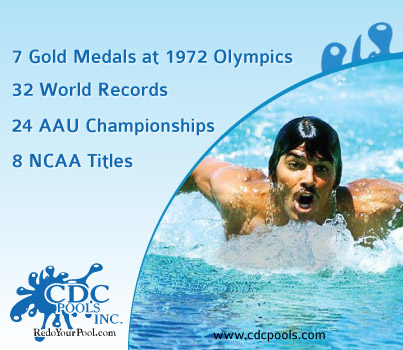
At the 1988 Games in Seoul, South Korea, Kristin Otto of East Germany won six gold medals and Janet Evans of the United States won three. American Matt Biondi won five gold medals in the men’s events. Also at Seoul, Anthony Nesty of Suriname became the first black Olympic swimming champion when he won the 100-meter butterfly.


D Recent Developments

In open water swimming, Australia’s Susie Maroney performed several feats previously thought impossible. In 1997 she became the first person to swim the 169-km (105-mi) strait between Havana, Cuba, and Key West, Florida. The following year she completed a 206-km (128-mi) swim from Isla Mujeres, Mexico, to Las Tumbas beach in Cuba. In 1999 Maroney swam the 160-km (100-mi) distance from Jamaica to Cuba.
EVALUATION:
1. defined swimming
2. mention four strokes in swimming
3. mention three safety precaution during swimming
Reading assignment: Essential of PHE by SA Erazmus book 2 page 99—104
ASSIGNMENT: Give a brief history of swimming and mention two notable swimmers in time past.
